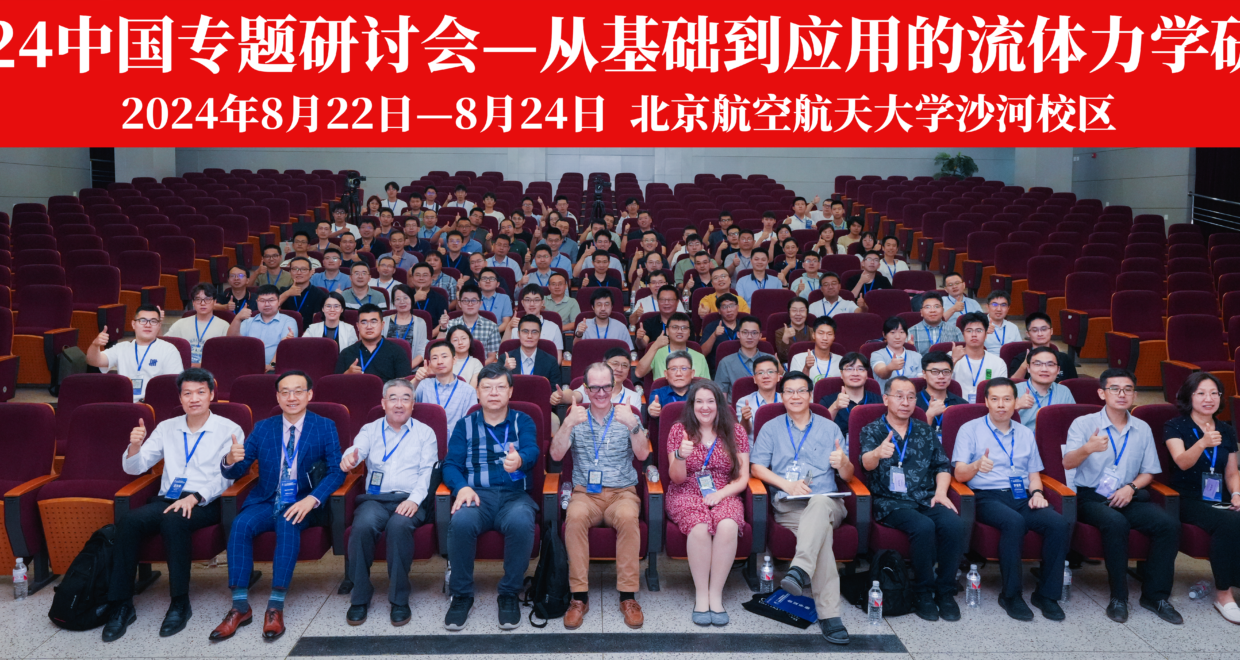2024 JFM-Flow China Symposium: from fundamentals to applied mechanics, Beijing
In August, the JFM/Flow 2024 China Symposium in Beijing was a landmark event co-hosted with the School of Aeronautic Science and Engineering at Beihang University. With more than 160 experts and scholars congregating from various universities and the online viewership skyrocketing past 30,000, the symposium marked a significant milestone in fluid mechanics in China.
The event opened with anticipation and excitement among attendees as Professor Chong Pan, the esteemed Dean of the School of Aeronautic Science and Engineering at Beihang University, welcomed delegates. He spoke about the importance of bringing together researchers from all over China to discuss the advancements and trends in fluid dynamics.

James Pan, Director of Academic Publishing (Asia) at Cambridge University Press, addressed Cambridge’s progress in open access in his opening remarks. He also spoke of the success of both Journal of Fluid Mechanics (JFM) and Flow in China. His vote of thanks to Beihang University for their invaluable contribution highlighted the collaborative spirit of the symposium.
The talks and presentations that followed enriched the exchange of knowledge. Professor C. P. Caulfield, editor-in-chief of JFM, took to the stage to share his insights on Stratified Turbulence, kicking off a series of enlightening sessions covering a wide range of topics in fluid mechanics. The expertise of keynote speakers from the Institute of Mechanics, Chinese Academy of Sciences, University of Melbourne, National University of Singapore, Tsinghua University, and several other renowned institutions contributed to a thought-provoking event.

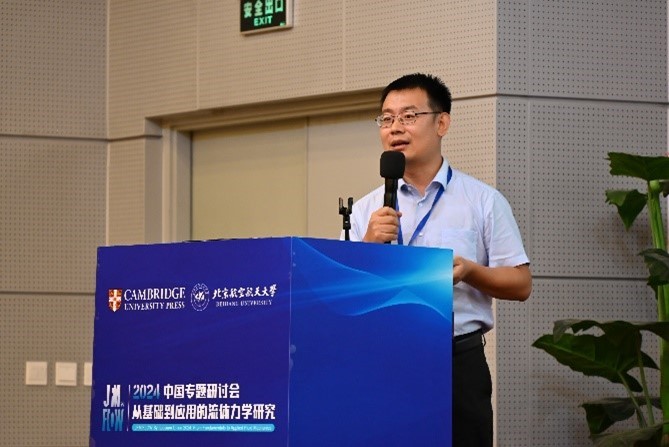
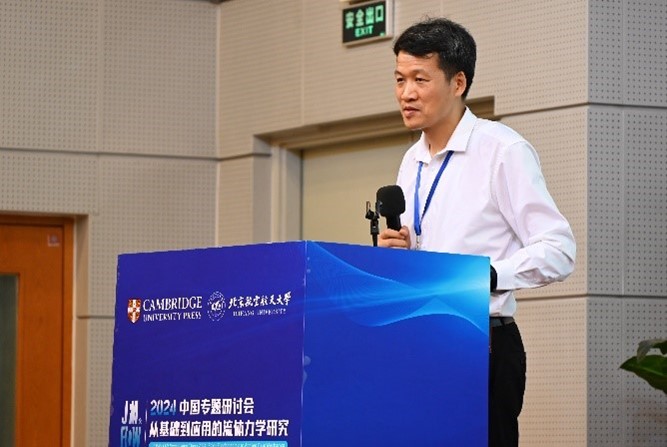
Anna Simpson, Publisher of Cambridge University Press, played a crucial role in demystifying the academic publishing world for the attendees. Her presentation on the development directions, inclusion status, and review processes of JFM and Flow served as a valuable guide for many scholars looking to enhance their understanding and visibility in the field.
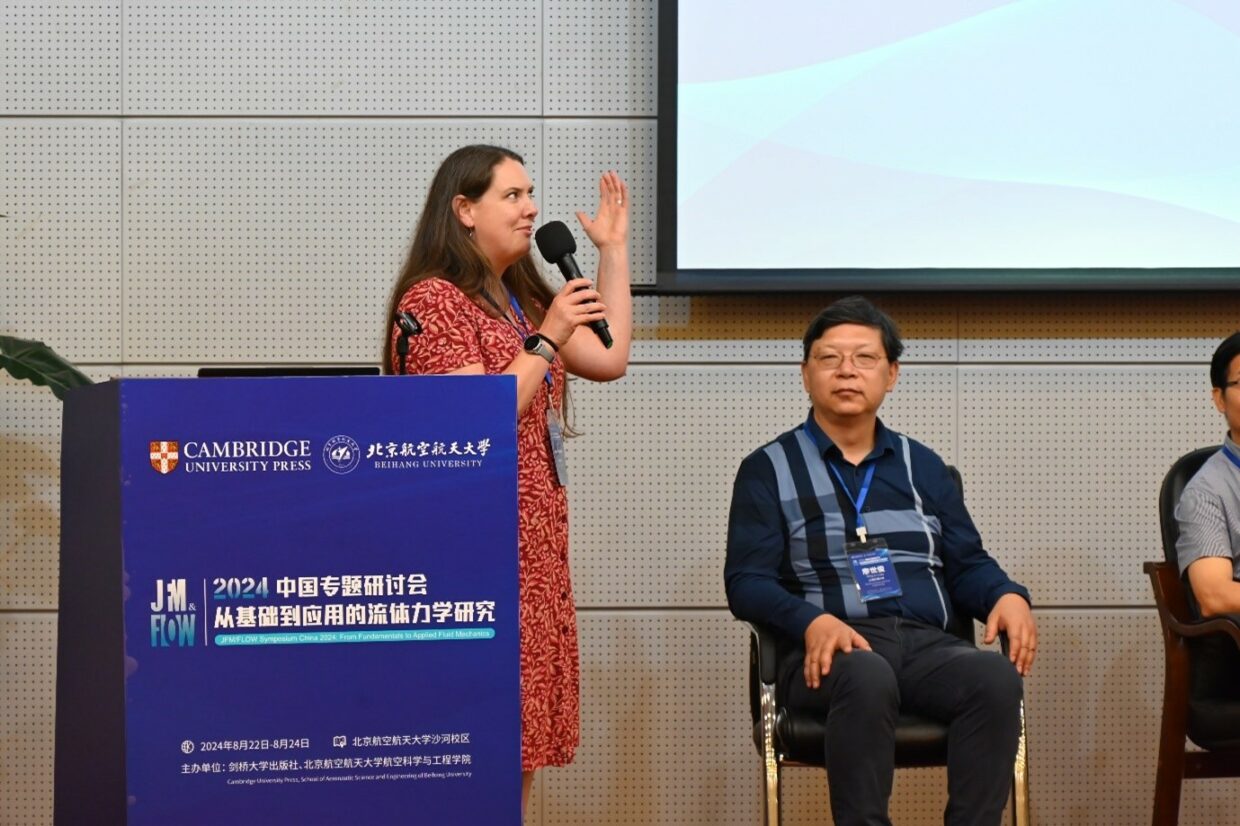
One of the symposium’s most engaging segments was the dialogue between the Editors-in-Chief, Professors C. P. Caulfield and Juan G. Santiago, and Chinese Associate Editors, Professor Ziniu Wu, Lianping Wang, Shijun Liao, Cunjing Lv, with the local scholars. This interaction paved the way for a healthy exchange on the intricacies of journal policies, research methodologies, and future trends in fluid dynamics, fostering a deeper connection between the editorial board and the academic community.
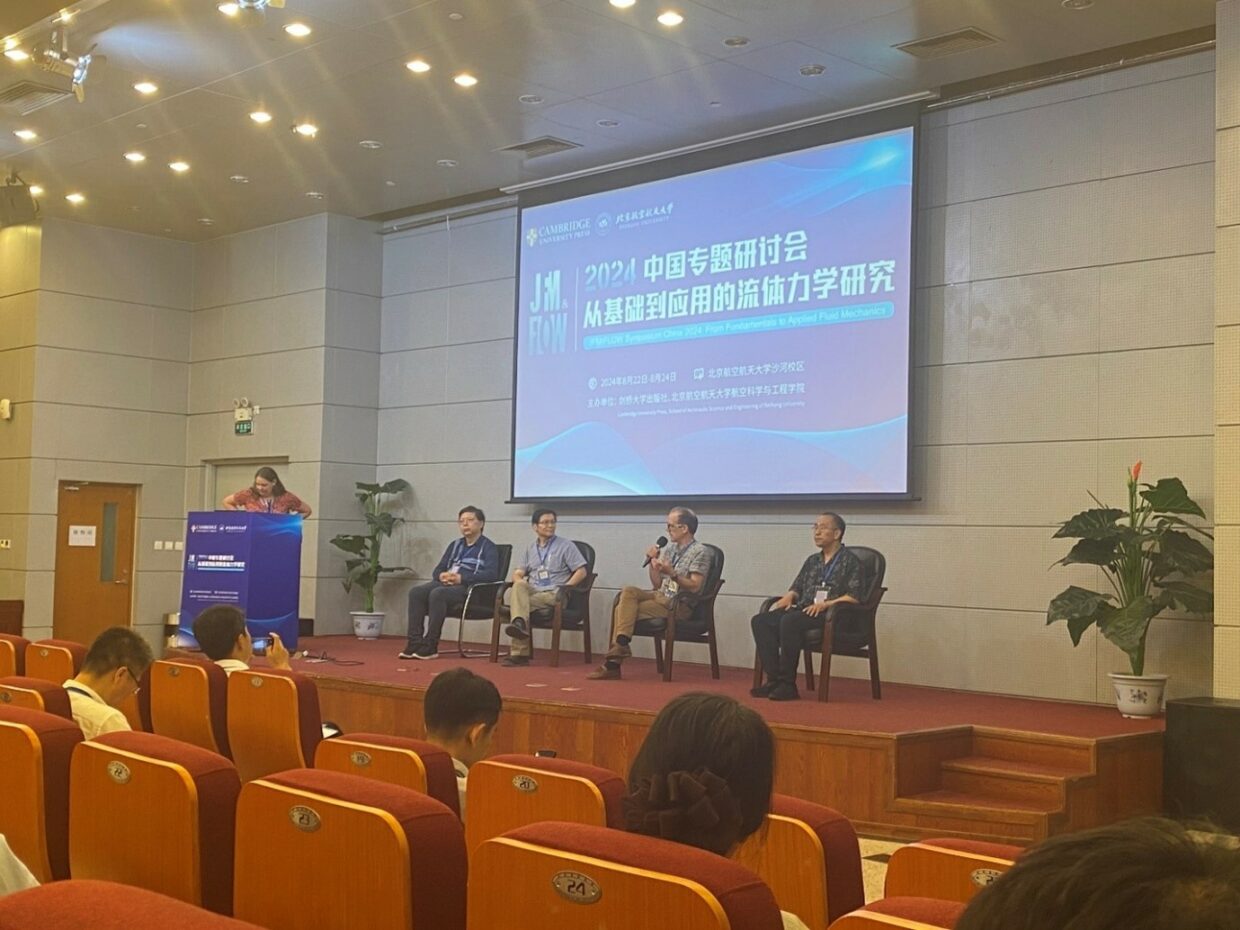
The symposium’s second day consisted of thirty speakers from various research institutes sharing their latest findings. This session not only broadened the scope of discussion but also opened numerous avenues for collaboration among researchers.
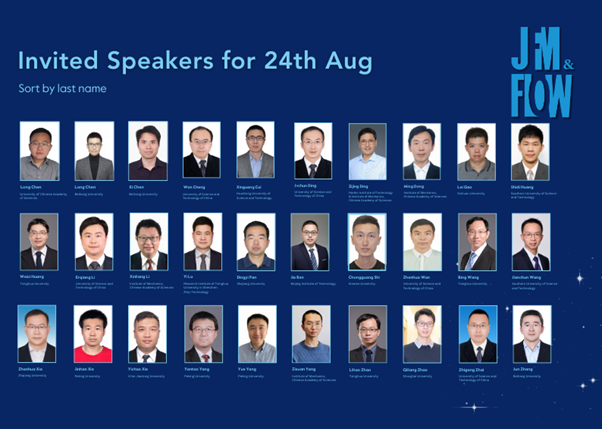
The success of the JFM/Flow 2024 China Symposium could largely be attributed to the meticulous planning and execution by the School of Aeronautic Science and Engineering at Beihang University. Their hospitality and the engagement of every attendee made for an intellectually enriching two days that went beyond mere academic discussion to forge long-standing professional networks and friendships.
The JFM/Flow 2024 China Symposium was more than just a conference. It celebrated the collective quest for knowledge, testified to the strength of collaboration, and took a forward step in the global advancement of fluid mechanics studies. The insights shared, discussions held, and connections made during these two days have undoubtedly set a new benchmark for future symposia.
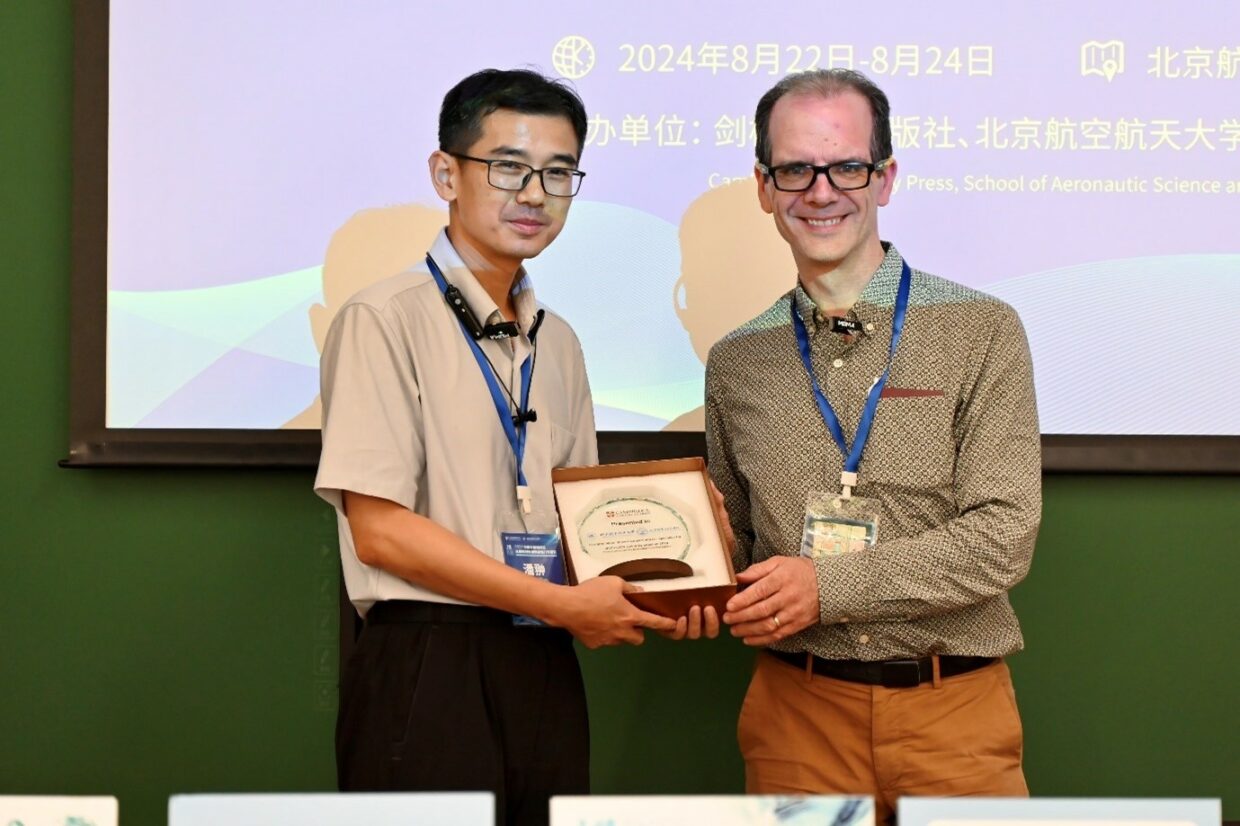
As we bid farewell to an eventful gathering, anticipation for the next JFM/Flow China Symposium grows. The dynamic discussions, groundbreaking presentations, and spirit of unity among fluid mechanics enthusiasts worldwide have set the stage for an even more spectacular event in the future.
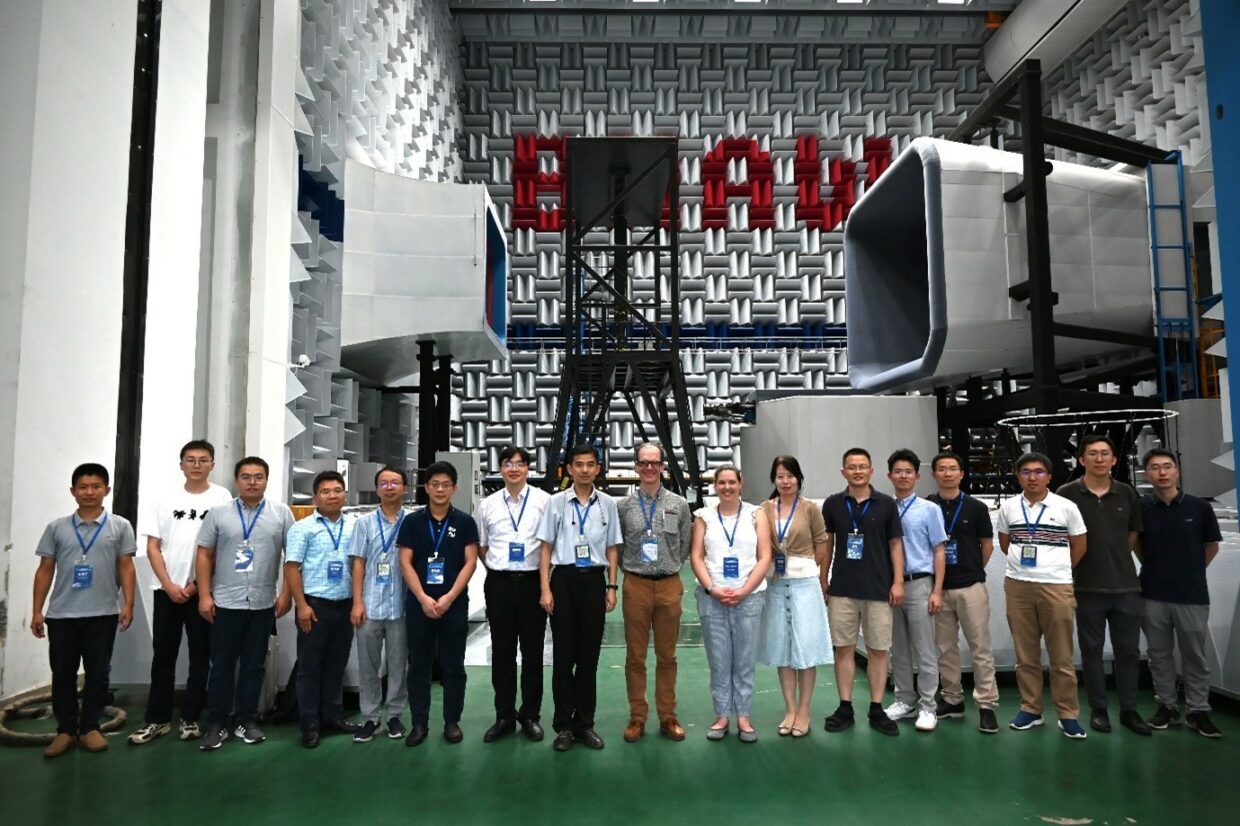
The momentum gained from this symposium is a clear sign that the field of fluid mechanics in China is thriving, with an engaged community ready to contribute to its global reputation and scientific advancements. Here’s to more discoveries, collaborations, and symposia that push the boundaries of our understanding of fluid dynamics.

Journal of Fluid Mechanics is the leading international journal in the field and is essential reading for all those concerned with developments in fluid mechanics. It publishes authoritative articles covering theoretical, computational and experimental investigations of all aspects of the mechanics of fluids.
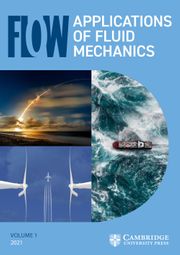
Flow focuses on the applications of fluid mechanics to technology, natural, and medical sciences, and descriptions of the physical world. An open access companion journal to the Journal of Fluid Mechanics, Flow is a translational journal that seeks to leverage the principles and tools of fluid mechanics and transport phenomena to enable devices and systems that benefit humankind, or provide scientific insights into nature.
